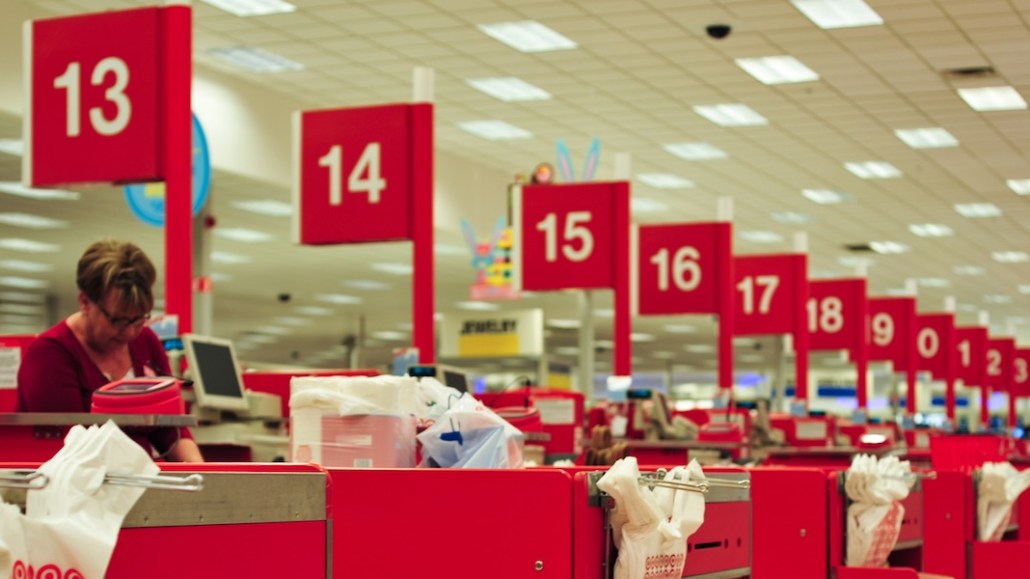Target is dealing with online cart abandonment by luring customers into stores

Target is trying to solve cart abandonment by pushing customers who have left online shopping carts behind into stores with a special promo code.
Target now emails a customer when an item they left in a cart goes on sale, in addition to offering special promotions on items, a company representative said. The deal could be either online — the traditional approach — or good for in-store pickup, where data show average checkout prices are much higher.
Online cart abandonment is a persistent problem for retailers. More than 70 percent of all online shopping carts are abandoned, according to Matt Schlicht, CEO of Octane AI, a company with more than 1,000 clients that operates a bot to chat with consumers and drive down cart abandonment. At the end of 2016, cart abandonment was estimated to amount to $18 billion a year in lost revenue. A typical solution has been to try to patch up an online problem with an online solution, in the form of email reminders that aim to pull shoppers back to the site. But online sellers are challenged to replicate what makes sales in physical stores so successful, he said.
“When you’re in a physical location, it’s really easy to pick up items, put them in a cart,” said Schlicht. “If you have any questions, you can talk to a sales associate. It makes it much more likely that you’ll go through with purchasing it. How can we bring the same level of customer attention to someone who’s shopping online as they would in a retail store?”
Target wouldn’t elaborate on how it sweetens the deal for online cart ditchers to go make purchases in store, but a consultant who works with Target said the company is trying to capitalize on data that show consumers tend to spend more in-store than online. Target stores are notorious for their “go in for one item, leave with 20 more” allure.
Customer data capturing helps drive this strategy. The consultant noted that carts tied to addresses make it simple for Target to suggest which of its more than 1,800 stores are close by, and have a certain product in stock.
“Say you’re shopping for something, and you don’t check out,” the consultant said. “You can say, ‘Hey, that shirt is available down the road. I’ll give you 10 bucks to go get it.’ Target can offer the incentive to get you into the store, where you’ll spend more.”
It goes back to eliminating the divisions between shopping online and shopping in a store as retailers try their best to create a blended, cross-channel model that will drive the most revenue. There are also logistical considerations. Because retailers ship much of their online goods from warehouses or stores throughout the country, each store doesn’t necessarily match the inventory of what’s online, so it has to ensure inventory accuracy before sending a promotional prompt.
In making up for cart abandonment, a personalized message, even one that’s automatically generated, that ties into a customer’s shopping history to suggest new buys at low prices works well to generate new sales, Schlicht said.
“The more that retailers know who you are and where you are and what your preferences are, they can target you with more contextualized types of offers,” the consultant said.
Subscribe to the Digiday Retail Briefing: A weekly email with news, analysis and research covering the modernization of retail and e-commerce.
More in Marketing

Pandora is betting on AI agents to scale service and emotional selling during the peak holiday season
Pandora is using AI agents to scale customer service and replicate emotional in-store selling online, just as peak season puts pressure on margins and teams.

Rembrand’s CEO wants to grow virtual ad placements in streaming, and he’s looking elsewhere for models
Omar Tawakol wants to improve advertising within the streaming world, and is working with advertisers and publishers to improve that experience.

Marketers are keen to use generative AI in ad campaigns, but hidden costs lurk
Marketers across the industry want to use AI to cut down on time spent in creative production. It’s not so simple in practice.





